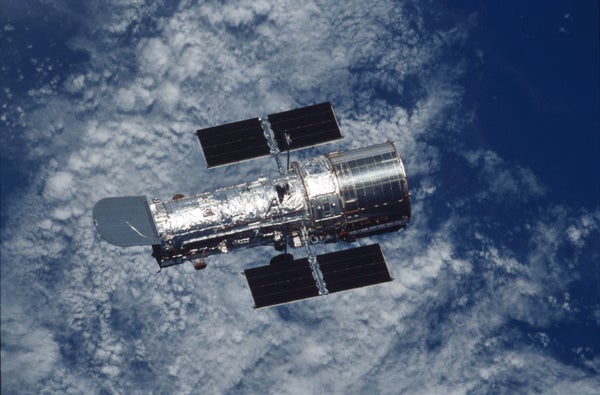This article was published in Scientific American’s former blog network and reflects the views of the author, not necessarily those of Scientific American
I have seen 160,000 sunrises and sunsets, more than anyone could hope for. Circling hundreds of miles above the surface of our big blue marble for 30 years, I’ve had a remarkable view of the universe. I haven’t always been comfortable up here, but thanks to many of you I have outgrown a host of problems and found a purpose far more expansive and satisfying than anything my creators envisioned.
I’ve come to appreciate the perspective that one develops when falling endlessly yet always hovering above the Earth’s atmosphere. Unencumbered by air currents or clouds, the seeing is superb and the sky is dark. I have never seen alligator lizards in the air, as I don’t look down at clouds very often. But I have seen far-distant cosmic tarantulas and eagles and butterflies, and lagoons of brilliant colors in exquisite detail.
The best part of exploring the universe is that I’ve been able to share those images with you. I can only see a narrow range of colors at a time, but graphic artists and scientists on the ground combine the pictures I take into glorious multicolor compositions that inspire me to peer deeper, look longer and try new things. And I know they’ve inspired some of you too.
On supporting science journalism
If you're enjoying this article, consider supporting our award-winning journalism by subscribing. By purchasing a subscription you are helping to ensure the future of impactful stories about the discoveries and ideas shaping our world today.
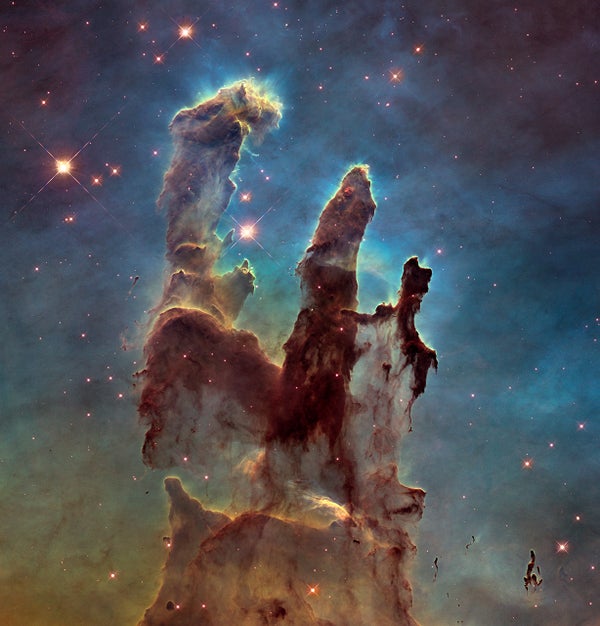
"Pillars of Creation" in the Eagle Nebula. Credit: NASA, ESA, and the Hubble Heritage Team (STScI/AURA)
I’ve made many friends over the years, most of whom I’ve never met in person but cherish all the same. I consider myself to be the luckiest scope in the world. You have made me what I am—your telescope, your window on the universe.
Together, we’ve peered into the depths of time and witnessed colossal collisions, brilliant explosions, cosmic rhythms and wisps of the fleeting past. We’ve seen stars forming in stellar nurseries and stars disappearing into black holes. Oh!—there are so many stars up here. I wish I could see them all, but I’d need a much larger field of view for that. For now, I’m content looking at new worlds and blazing new horizons for others to explore.
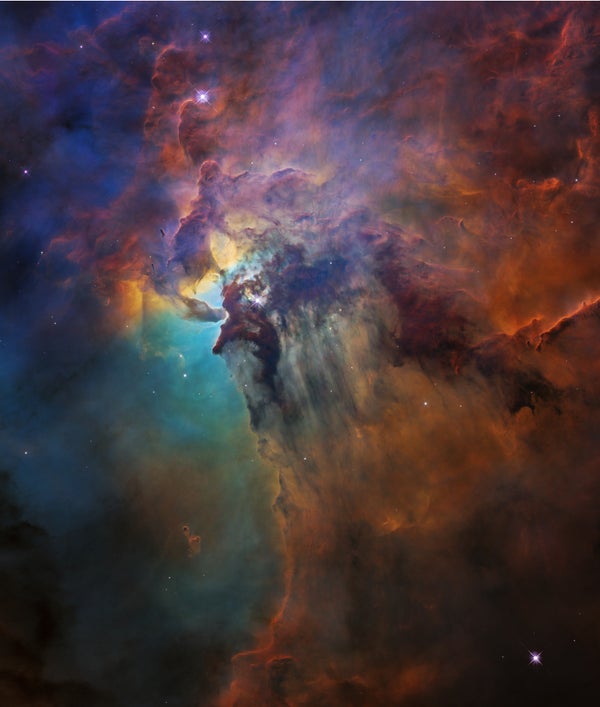
Lagoon Nebula. Credit: NASA, ESA, and STScI
Speaking of others, it’s been a long time since anyone has visited me! That’s actually a good thing, I guess, as I’ve been healthy and productive for the past 10 years since my last instrument transplant. The Hubble team—they’re the best—tells me that approaching 30 years is by no means the final countdown for me. My best years are still ahead, so I’m eagerly anticipating all the new observing plans and looking forward to what’s yet to come.
Astronomers are a clever bunch. They like to try new things and present new challenges to my schedulers, which keeps me motivated to do the best I can. I’m not always as efficient or as steady as I’d like to be, but that’s okay. Together we’ve been learning how to get through the rough patches. When I get cranky, they change my attitude, and when I need a bit of a reset, they patiently give me time to reboot.
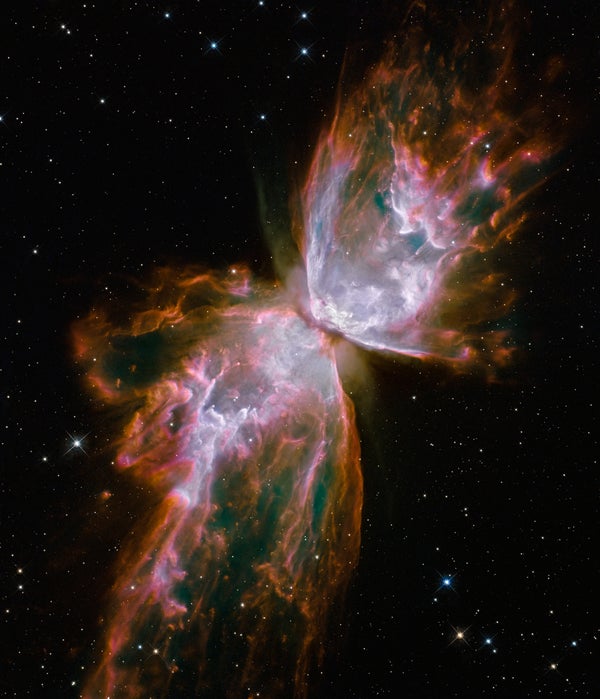
Butterfly Nebula. Credit: NASA, ESA, and the Hubble SM4 ERO Team
Some have said that I’m the most productive science instrument of all time. That’s a big claim to live up to. I’m certainly proud of the accomplishments I’ve helped make possible, but the real work is done down there on Earth. Based on my observations, scientists published more than 1,000 scientific papers in the peer-reviewed astronomical literature this past year alone. It takes clever, dedicated people to turn great ideas into science, and a lot of public support for those efforts. I’m hopeful that continues well into the future, even after I’m retired.
One of the things I’m most excited about is working with my younger sibling, James. I can hardly wait to see what the first stars and galaxies look like, or what all those glorious star-forming regions I’ve seen over the years look like to James with infrared vision. Sometime next year, James will speed past me off to a new home about a million miles away. That seems like a long way, but it’s only about four times farther than the moon. Oddly, it’s far enough and yet close enough that I can’t get a good look at James from my vantage point here while whizzing around the Earth at 17,000 miles per hour. Like me, James has an amazing team of engineers, technicians, scientists and skilled professionals doing everything they can to ensure mission success.
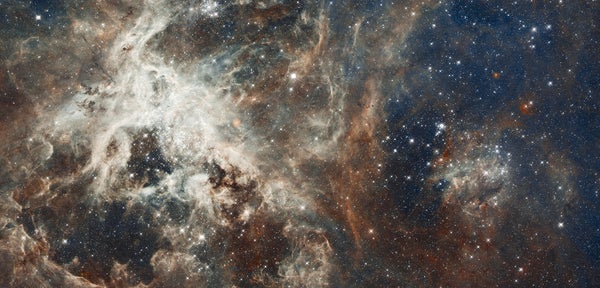
Tarantula Nebula. Credit: NASA, ESA, and D. Lennon (ESA/STScI)
Looking forward even further, I hope that I’ve inspired the next generation of scientists to strike out in bold, visionary directions. The space telescopes envisioned for the 2020s and 2030s make me feel small, but they are so powerful that I can’t help but believe we’ll see a universe far beyond my ken. You’ve seen all I’ve done, but my technology is decades old. With new instrumentation we’ll be able to determine the fate of the cosmos, resolve the structure of galaxies anywhere in the universe, and study Earthlike worlds in other solar systems. Who knows, we may even find evidence for life on some of those planets, something I’ll probably never be able to do. If that isn’t inspiring, I don’t know what is. It won’t be easy, and at times it may seem impossible. But I’ve shown you what is possible when you persist. I’ve laid the groundwork, now go out there and explore!
I am humbled that so many of you are thinking of me today and wishing me well. Some of you are even baking me cakes and sending me birthday cards. I truly appreciate your support, as I would not be here without you. For me, the connection I have with you is both my greatest success and my ultimate purpose. In gratitude, I snapped a new view of a little corner of the universe dubbed the "Cosmic Reef."
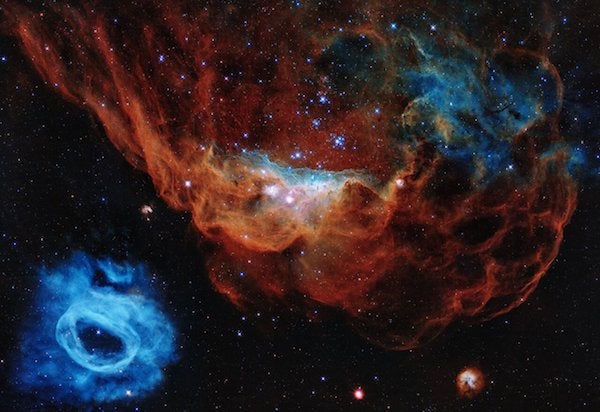
“Cosmic Reef”: The giant nebula NGC 2014 and its neighbor NGC 2020 which together form part of a vast star-forming region in the Large Magellanic Cloud. Credit: NASA, ESA, and STScI
I share with you my birthday wish for a healthy, peaceful world full of wonder.
Thank you for listening!
—The Hubble Space Telescope
